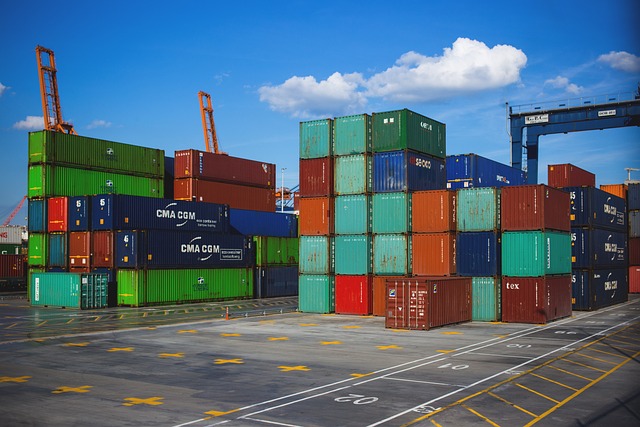How China Wholesale Suppliers Empower Entrepreneurs to Build Businesses from Scratch
For many first-time entrepreneurs, importing products and managing inventory can feel overwhelming. By working with wholesale suppliers and warehouse partners in China, small brands can launch global businesses without owning factories, trucks, or even storage space. This article outlines how these supply chain partnerships simplify sourcing, logistics, and growth for new and growing businesses around the world.

How China Wholesale Suppliers Empower Entrepreneurs to Build Businesses from Scratch
Starting a product business used to mean large upfront investments in stock, storage, and shipping contracts. Today, a growing number of entrepreneurs rely on wholesale partners and warehouse providers in China to handle much of that complexity. By combining production, storage, and distribution close to factories, these partners make it possible to launch brands with lean inventories and flexible logistics, even on a modest budget.
How China warehouse suppliers streamline global sourcing
China based warehouse suppliers sit close to manufacturing hubs, which gives them a critical role in global sourcing. Instead of shipping many small batches directly from different factories to different countries, entrepreneurs can send goods from multiple producers to a single warehouse. There, products are received, checked, relabeled if needed, and consolidated into larger and more efficient shipments.
Many warehouses offer extra value added services that reduce work for small teams. Typical options include quality sampling, basic inspections, repackaging, kitting and bundling, barcode printing, and attaching branded inserts. When these tasks happen in the warehouse, entrepreneurs do not need separate service providers or extra handling at destination, which shortens timelines and lowers the risk of errors.
Why China based warehousing boosts efficiency and lowers costs
When inventory stays inside China until it is sold, businesses can avoid tying up capital in large destination stock. Instead, goods remain in a central warehouse and are released in smaller, better timed batches. This approach reduces overstocking, makes it easier to react to demand changes, and helps avoid long term storage fees or clearance sales in destination markets.
China based warehousing can also reduce operational costs through scale and specialization. Local warehouse partners combine volumes from many clients, which often leads to better negotiated shipping rates with carriers and freight forwarders. Their teams work with standardized processes for picking, packing, and labeling, plus integrated software that connects with major ecommerce platforms. For entrepreneurs, this means fewer manual steps, lower labor needs, and more predictable per order handling costs.
Scaling with reliable Chinese warehouse networks
As a business grows from a few orders a week to hundreds or thousands, reliability becomes more important than improvisation. Larger Chinese warehouse networks typically operate multiple facilities in key regions such as Guangdong, Zhejiang, and coastal port cities. Some also run bonded warehouses and overseas fulfillment centers. Working with such networks gives entrepreneurs options to split inventory, shorten lead times to major markets, and adapt quickly when demand shifts.
At the same time, pricing must remain transparent enough for careful planning. Typical cost components include inbound receiving, storage based on space used, pick and pack fees per order, materials such as cartons or filler, and outbound freight. The example providers below show reference price ranges drawn from publicly shared or commonly cited market information; exact quotes always depend on volume, product type, and destinations.
| Product/Service | Provider | Cost Estimation |
|---|---|---|
| Cross border ecommerce fulfillment, including storage plus pick and pack | Cainiao, part of Alibaba Group | Storage often around 5 to 15 US dollars per cubic meter per month; pick and pack from about 0.20 to 0.40 US dollars per order, plus outbound shipping based on service level and country |
| Domestic and cross border warehousing and parcel delivery | JD Logistics | Storage commonly quoted from roughly 6 to 20 US dollars per cubic meter per month; domestic parcel delivery in China from about 1 to 3 US dollars per package depending on weight and distance |
| Cross border third party logistics with China warehouses | 4PX Express | Storage for ecommerce goods often falls in the 10 to 25 US dollars per cubic meter per month range; order handling from around 1 to 3 US dollars per parcel plus international postage |
| Integrated logistics and warehousing for ecommerce and B2B | SF Express | Storage and fulfillment typically priced case by case; smaller cross border parcels often range from roughly 5 to 15 US dollars per shipment depending on destination, weight, and service speed |
Prices, rates, or cost estimates mentioned in this article are based on the latest available information but may change over time. Independent research is advised before making financial decisions.
Beyond headline prices, reliable networks add value through process design and technology. Many Chinese warehouse providers offer web based dashboards or application programming interfaces that synchronize stock levels, orders, and tracking numbers with online stores. Some apply basic data analysis to identify slow moving stock, recommend reorder points, or adjust storage layouts so fast movers stay closer to packing stations. These smarter storage options help keep operations smooth even as product lines and order volumes expand.
Well managed warehouses also build redundancy into their logistics. For example, they may maintain relationships with several carriers, support multiple shipping lanes, or keep backup space in partner facilities. For entrepreneurs, this reduces the risk that a single disruption, such as a local lockdown or carrier capacity crunch, will halt deliveries entirely.
Entrepreneurs who work with China based warehouses can also experiment more easily. Because they do not need to commit to large destination storage, they can test new products or packaging in small quantities and monitor demand before scaling up. If a new item underperforms, excess stock stays close to the factory, where it can sometimes be reworked, remarketed, or combined with other shipments at lower cost.
To get the most from these partnerships, it is important to compare potential providers on several dimensions, not just headline price. Useful criteria include the clarity of itemized billing, the responsiveness of account managers, the availability of real time inventory visibility, and the provider s experience with specific sales channels, such as marketplaces or crowdfunding platforms. Visiting facilities in person or arranging independent audits can further increase confidence in long term cooperation.
In the end, China wholesale suppliers and their associated warehouse services give entrepreneurs a practical way to turn ideas into global businesses. By centralizing stock near factories, consolidating shipments, and providing structured fulfillment processes, they reduce financial risk and operational complexity. Combined with clear cost structures and reliable logistics networks, these capabilities allow small teams to focus on product design, branding, and customer relationships while still operating with the discipline of a far larger supply chain organization.




